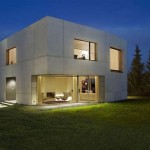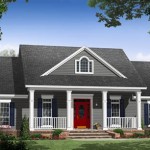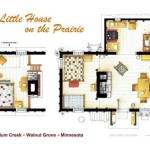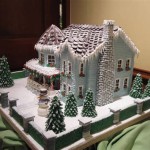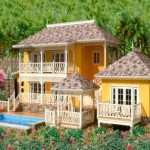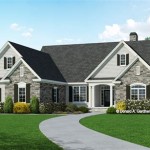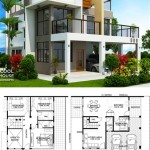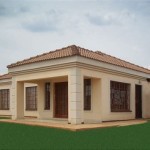Barn Owl Birdhouse Plans: A Comprehensive Guide
Barn owls, scientifically known as Tyto alba, are beneficial predators of rodents, making them valuable allies for farmers and gardeners. Providing suitable nesting sites through properly designed and placed barn owl boxes can encourage these birds to establish territories and contribute to natural pest control. This article provides a comprehensive guide to barn owl birdhouse plans, covering key aspects from design considerations to installation and maintenance.
Understanding Barn Owl Nesting Preferences: Barn owls are cavity-nesting birds, typically utilizing natural tree hollows, crevices in cliffs, or abandoned buildings. When designing a barn owl box, mimicking these natural preferences is crucial for success. Key considerations include size, entrance hole dimensions, and interior layout.
Dimensions and Design: A rectangular design is generally preferred, providing ample space for nesting and raising young. Recommended internal dimensions are approximately 16 inches wide, 16 inches deep, and 24 inches high. The floor area should be spacious enough to accommodate the growing owlets. A smaller box may lead to overcrowding and reduced owlet survival.
Entrance Hole: The entrance hole is a critical design element. It should be large enough for the owl to enter comfortably but small enough to deter potential predators. A circular entrance hole with a diameter of approximately 6 inches is typically recommended. Placing the entrance hole near the top of the box allows the owls to observe the surrounding area before exiting.
Material Selection: Durability and weather resistance are paramount when choosing materials for the barn owl box. Untreated exterior-grade plywood or rough-sawn lumber are suitable choices. Avoid using pressure-treated lumber, as the chemicals used in the treatment process can be harmful to the owls. Cedar or redwood are naturally resistant to decay and insect infestation, offering longer-lasting protection.
Ventilation and Drainage: Proper ventilation and drainage are essential for maintaining a healthy environment within the box. Several small drainage holes drilled in the floor of the box will allow water to escape, preventing moisture buildup. Additionally, incorporating gaps or vents in the upper portion of the box can facilitate air circulation and prevent overheating.
Construction Techniques: Precise construction is vital for ensuring the safety and longevity of the barn owl box. Securely fasten all joints using screws or nails, and reinforce corners for added stability. Avoid using glues or sealants that emit strong odors, which could deter the owls from using the box.
Placement and Installation: Choosing the right location for the barn owl box is as important as the design itself. Barn owls prefer open areas with good visibility for hunting. Ideal locations include barns, silos, or poles placed in open fields or pastures. Avoid placing the box in heavily wooded areas or near busy roads.
Mounting Height: The recommended mounting height for a barn owl box is between 15 and 20 feet above the ground. This height provides protection from predators while allowing the owls easy access to hunting areas. Ensure the box is securely attached to a sturdy structure and is not prone to swaying or movement.
Protecting Against Predators: Taking measures to deter predators is crucial for protecting barn owls and their young. Adding a predator guard below the entrance hole can prevent raccoons, snakes, and other climbing predators from accessing the box. A metal flashing or cone-shaped guard can be effective deterrents.
Maintenance and Monitoring: Regularly inspecting and maintaining the barn owl box is essential for its continued effectiveness. Annual inspections should be conducted after the nesting season to remove old nesting material, check for damage, and make any necessary repairs. Monitoring the box for occupancy can provide valuable information about the local barn owl population.
Legal Considerations: Before installing a barn owl box, it is important to research and comply with any local, state, or federal regulations regarding wildlife and protected species. Permits may be required in certain areas.
Alternative Designs: While the rectangular design is commonly recommended, other designs, such as the traditional A-frame style, can also be effective. The key is to ensure the box provides adequate space, proper ventilation, and protection from the elements and predators.
Resources and Further Information: Numerous resources are available to provide detailed barn owl box plans and information on barn owl conservation. Consulting with local wildlife organizations or ornithological societies can provide valuable insights and guidance for attracting and supporting barn owls in your area.
Building a barn owl box can be a rewarding project that contributes to the conservation of these beneficial birds. By following these guidelines and prioritizing the owls’ needs, you can create a safe and attractive nesting site that will hopefully support a thriving barn owl population.

Barn Owl Nestboxes Free Nest Box Plans

Barn Owl Nestboxes Free Nest Box Plans

Barred Owl Bird House Plans Houses Diy

Barred Owl House 70birds Birdhouse Plans Index

Barn Owl Boxes For Trees The Trust

Bird Studies House Plans Wooden Houses

Barred Owl Nest Box Plans 70birds Birdhouse Bird Houses House Kits

Owl House Plans Free Bird

Little Owl Nest Box Indoor Outdoor The Barn Trust

Birdhouse And Nest Box Plans For Several Bird Species The Birders Report

